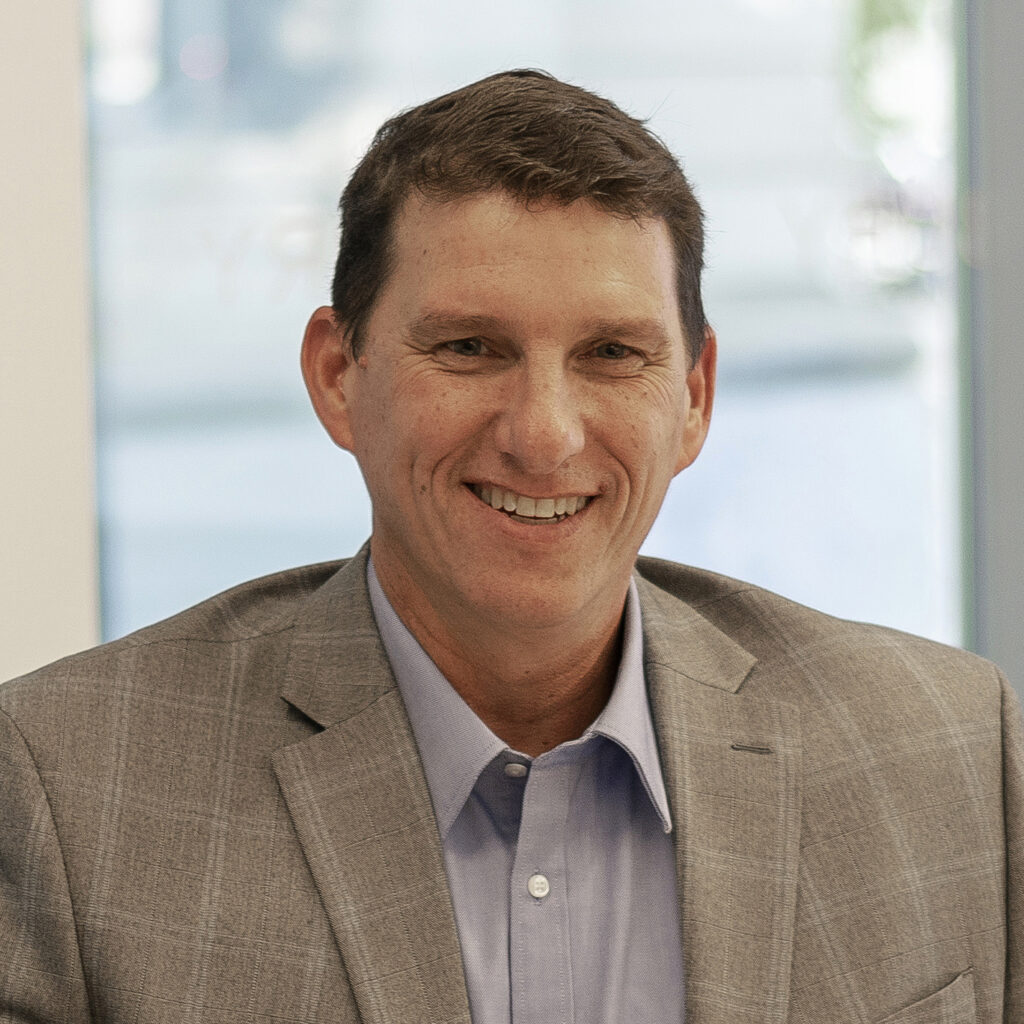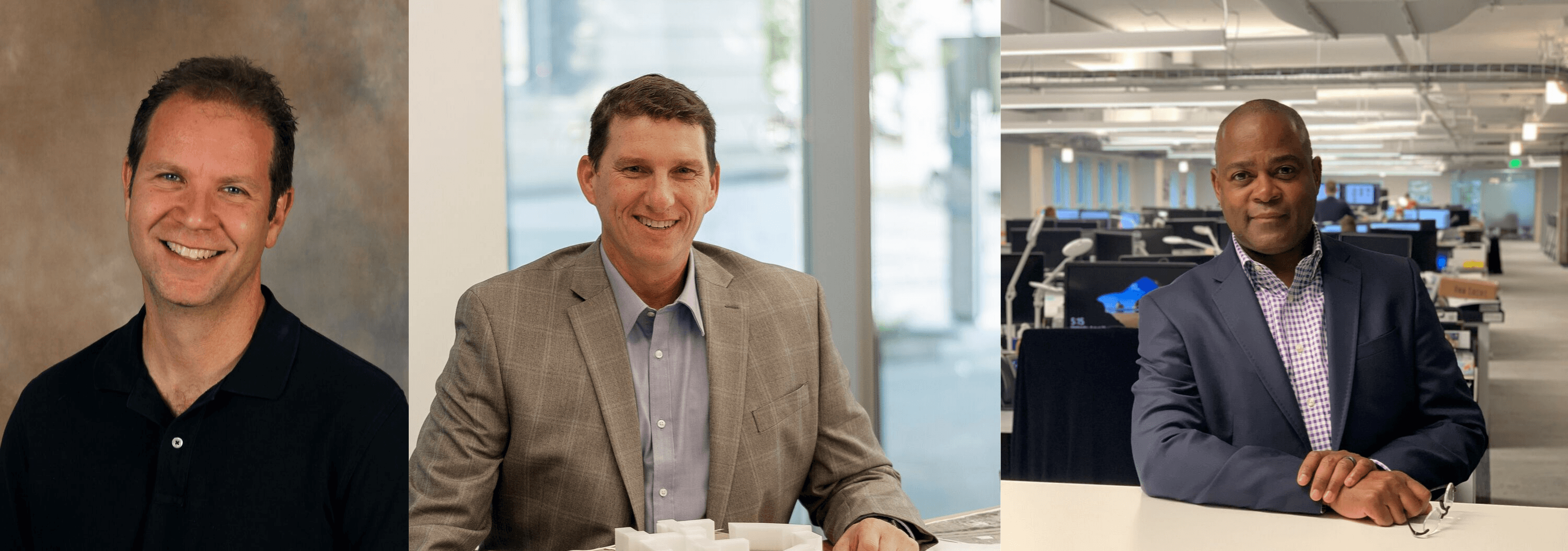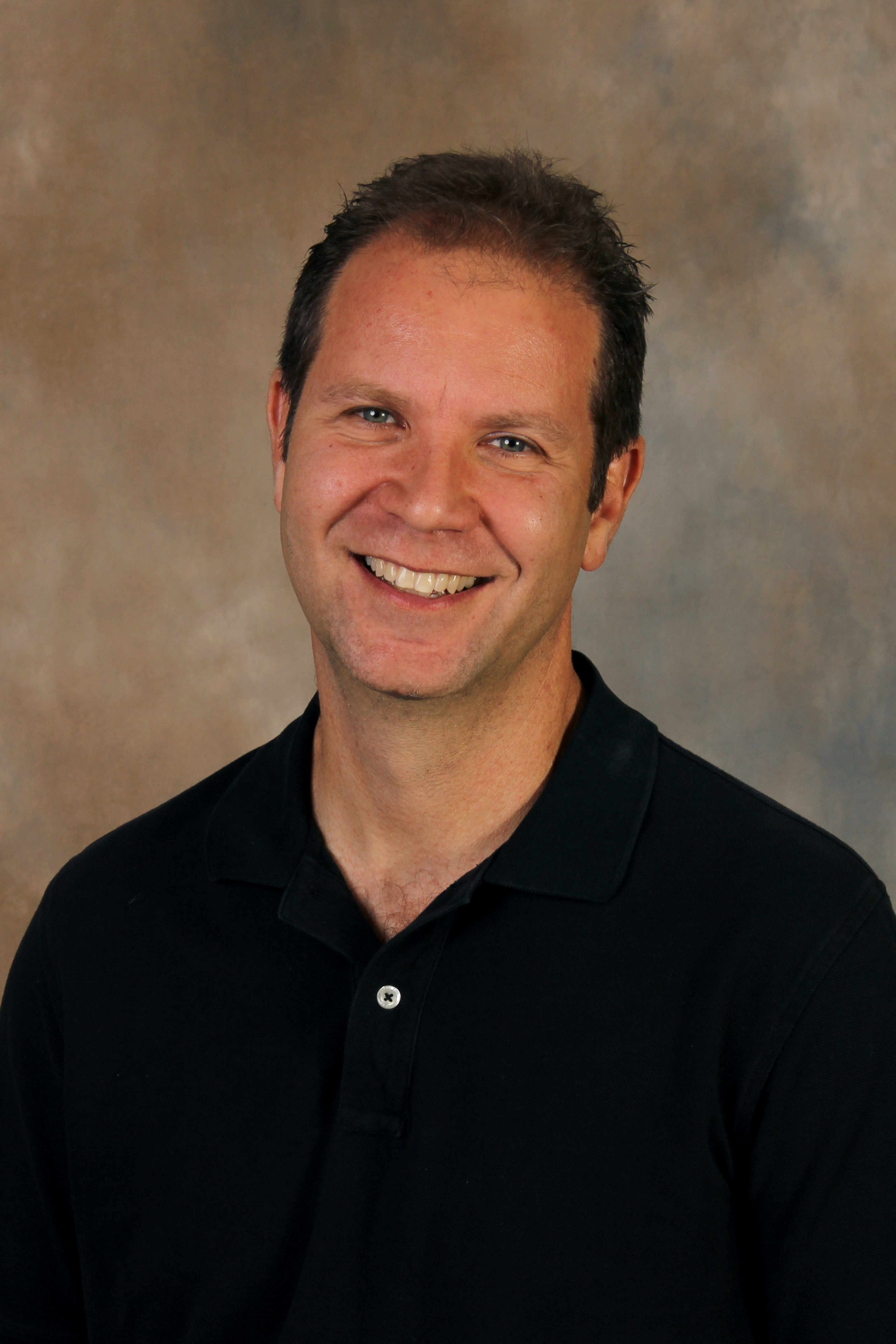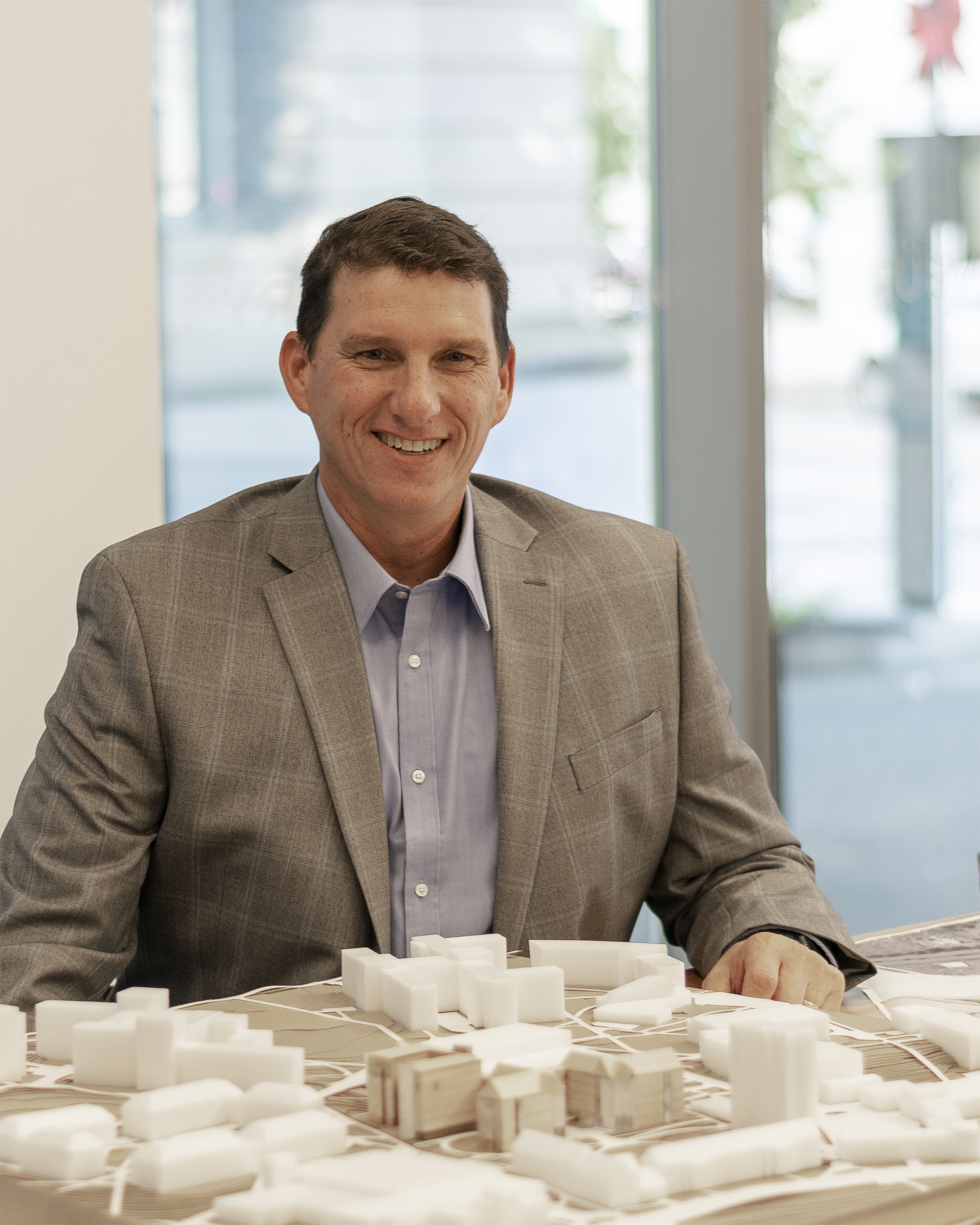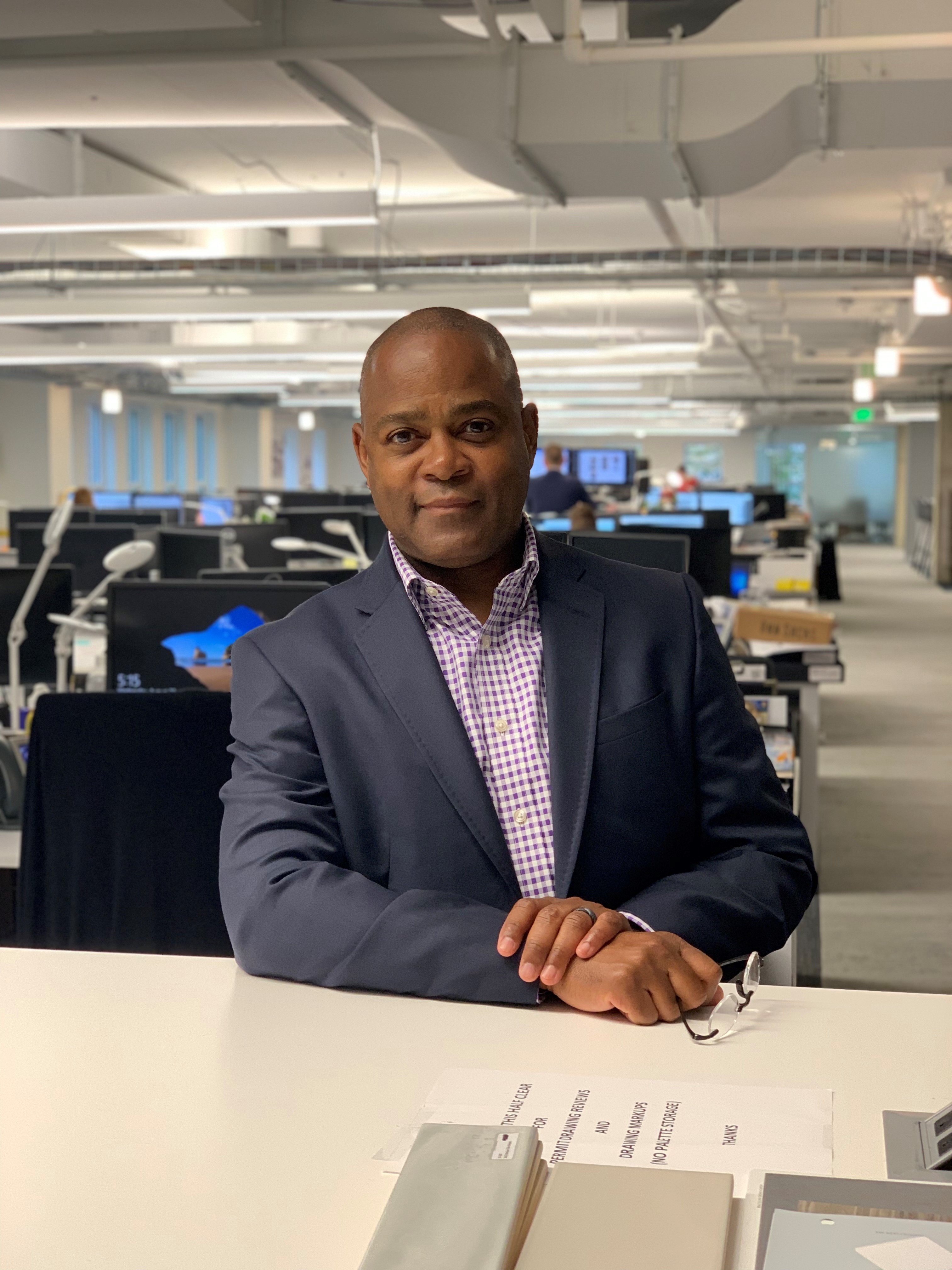David Keith, FAIA is a Design Principal and CEO of Hanbury in Norfolk, Virginia. David champions a model of practice driven by continuous talent development, creating a thriving culture of design excellence and transforming the firms that he leads and the communities and campuses in which he works.
David is a fierce advocate for growing the next generation of architects and professional leaders. Entering the profession in 1987, in the first Intern Development Program class, he observed that few firms had a clear approach to helping young architects grow professionally and personally. Ever since he has analyzed how architects learn. Beginning with his first opportunity to mold practice culture, he has shaped teaching firms that deepen and accelerate that learning, providing intentional opportunities for growth with every project.
David structures his practice to create a continuum of education for young designers entering the profession. His expanding firm’s new offices are located near architecture schools. He works closely with schools to understand what students are looking for. Out of this exchange and his personal experiences, David developed his firm’s career development and talent recruitment programs.
David has created teaching practices that use these tools to ensure continuous professional and personal growth:
- Research: David incorporates research into studio practice, to enable individuals to explore subjects(building systems, program outcomes, evidence-based design, sustainability and resiliency, etc.)about which they are passionate. David works to build each designers’ confidence that they can complete outstanding projectsthat reflect their passions and interests.
- Mentoring: David’s Responsibility Matrix (presented as a case study inThe Architect’s Handbook of Professional Practice) enables young designers to assess abilities, identify personal growth agendas, and communicate those agendas to teammates. This process takes place at every project phase kick-off, when young team members identify both the strengths they will bring to the project and five or six goals for professional growth. The project manager is expected to incorporate two or three of these goals into the team’s work plan, thus ensuring growth with every project and providing an opportunity for each employee to shape their career track in a personal way. This approach creates motivated and highly effective teams that often over-perform.
- Expectations of Senior Staff: The incorporation of goals for growth into work plans is a core expectation of senior staff. Because it puts young people in unfamiliar situations, they will at times make mistakes. David closely guides how senior staff responds to such mistakes, enforcing a strict “No Assholes Rule”: no getting mad, no beating people up, no blaming. It is a moment for teaching.
Summer Scholars Research Projects
A pivotal element of David’s approach is the Summer Scholars program, which has brought young people from more than 25 prestigious schools of architecture throughout the US, Canada, Mexico, India, and China to engage in research and design that achieves real-world significance.
Design Excellence
The outward fruit of systematic talent development is design excellence across a wide range of contexts, from conventional practice, focused on higher education, civic and commercial projects; to pro bono practice, advancing the missions of organizations like Operation Smile; to rigorous design-build work for the US military; to regional community development.
Firm Transformation
The inward payoff of talent development is firm transformation. The most vivid measure of David’s success is the transformation of Clark Nexsen. In the 15 years he was its Director of Architecture and Design Director it won over 200 design awards — more than 40 of them from the AIA — and rose to #11 in the ARCHITECT magazine 50. His current firm, Hanbury, with David in his fourth year as President and CEO, is on a similar trajectory.
The profession has long sought better models for bridging between school and practice. David Keith’s teaching office, its success abundantly proven, is just such a model.
Where did you go to college?
I’ve been a Virginian most of my life. Born in Northern Virginia, grew up in Charlottesville, attended Virginia Tech, and have spent most of my professional life in Richmond and Hampton Roads.
I have a Bachelor of Architecture from Virginia Tech (1987).
What does it take to be an architect?
Curiosity, passion, humility, and leadership mixed in with a strong desire to learn and solve problems in creative ways.
Was there an architect that particularly inspired you?
I am most inspired and grateful for the many teachers/mentors that have influenced my career….Olivio Ferrari, Doug Gilpin, Marley Carroll/John Walters, Rohn Price/Dave King, Sandy Bond/Rob Comet/Doug Westmoreland, Brad Tazewell, and Jane Rathbone along with many others.
What are you currently reading?
I love books about art, architecture, and design, however, my reading has tailed off dramatically…I’m currently reading Vishaan Chakravarti’s A Country of Cities: A Manifesto for an Urban America
and I found Henry Ayon’s book Egyptian Places to be a delightful journey to a place I haven’t been.
What is the best meal you’ve ever had?
It’s not a single meal, but my favorite meal by far is Thanksgiving Dinner. We celebrate a traditional Thanksgiving with Turkey, Country Ham, Mashed Potatoes, Gravy, Stuffing, Pumpkin Pie (with Cool Whip), Green Beans, and Yeast Rolls. Most of all, I enjoy the gathering of my family (and it’s always a 4-day weekend which more often than not includes a Hokie win over the Hoos).
Why do you volunteer with AIA?
I believe that our profession has much to offer the world, and the AIA is the one organization that brings together architects from all backgrounds and provides opportunities to make an impact beyond our projects. It’s important to be involved and volunteer with the AIA as it will be what we collectively bring to it.

